one square meter X vitruta
We had an enjoyable interview with Zeynep Özar Berksü and Çağrı Berksü, the founders of one square meter, one of the newest brands at vitruta and pioneers of sustainable and slow fashion in our country.

Let’s get to know the founders of one square meter first, shall we? :)
Zeynep Özar Berksü: I was born in 1986 in Istanbul. I graduated with a bachelor’s and master’s degree in Political Science from Yıldız Technical University. I have a background in editorial work at magazines and short-term copywriting at agencies. For the past seven years, I’ve been telling stories about what the one square meter universe could be, sewing, and organizing the behind-the-scenes work. I’ve also been the editor of OGGUSTO’s Sustainable Living category for a significant period of time.
Çağrı Berksü: I was born in 1980 in Izmir. I graduated in Graphic Design from Bilkent University. I worked as an art director in advertising agencies for many years. For the past seven years, I have been designing, drawing patterns, taking photos, creating the visual world, and providing training for the employees of one square meter.
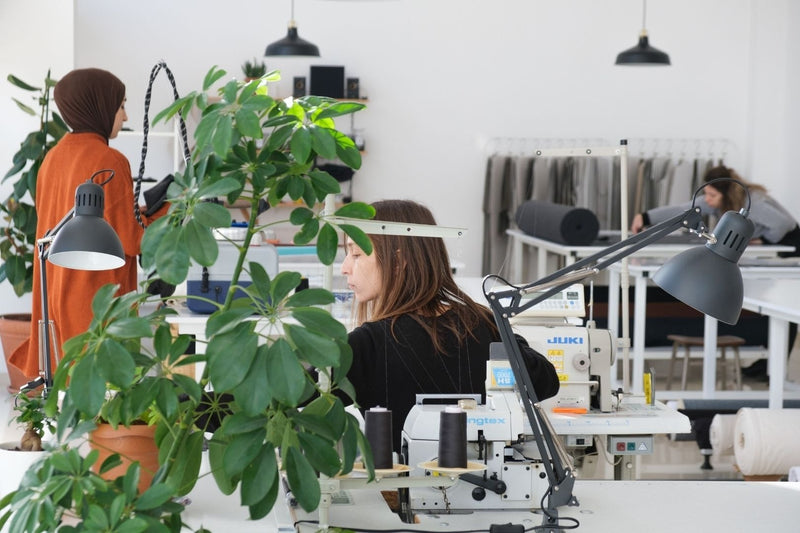
Can you tell us how the one square meter journey began?
one square meter is a love story born from the union of the two of us. It is a reflection of the choices we made about how we wanted to live our lives. The story began when we met, sitting across from each other at a one-square-meter table, discussing what we wanted to do and what we didn’t want to do. It started with slowly bringing those conversations to life, designing and producing at that very table. What began with a tree-printed bag evolved into designing and sewing clothes for both women and men. It has been an exciting journey filled with mistakes, lessons, ups, and downs, and it has introduced us to beautiful and valuable people. Now, we are in our 7th year, and we’re focused on making this adventure even more exciting.

How would you define the style of your brand?
Each piece that comes out of one square meter is designed to gain uniqueness with the person wearing it. The lack of patterns and simplicity reflect this concept. On the other hand, everything feels very familiar, but with a playful twist of its own. We love playing this game; we work on forms that could exist in their special way on different people, at different times, and in different places. We want them to come to life with us and add excitement to someone else's life.


What are your sources of inspiration?
We are inspired by women, and now also by men, and their needs in daily life. We imagine possible scenarios, create profiles, and visualize them in those moments; what should they wear, what would they need at that time, and how can we respond to that need? We start with silhouettes and then move on to forms and designs. Sometimes, we encounter a fabric that leads us; it tells us who it could look good on, when, and how.
How do you structure your collections?
We believe in good products. We think that a well-designed garment made with high-quality fabrics and craftsmanship will prove its worth by lasting for years. Therefore, our models, if there’s no further improvement to be made in the pattern, continue to exist in our collection for many years. Our current 7th-year collection is shaped by the experience and technical knowledge we’ve gained over the years. It includes pieces like the first sundress we designed six years ago (ADA SUNDRESS), the jacket (ERA JACKET) we introduced last year, and the LUN PANTS, which we initially designed for women and later adapted for men.
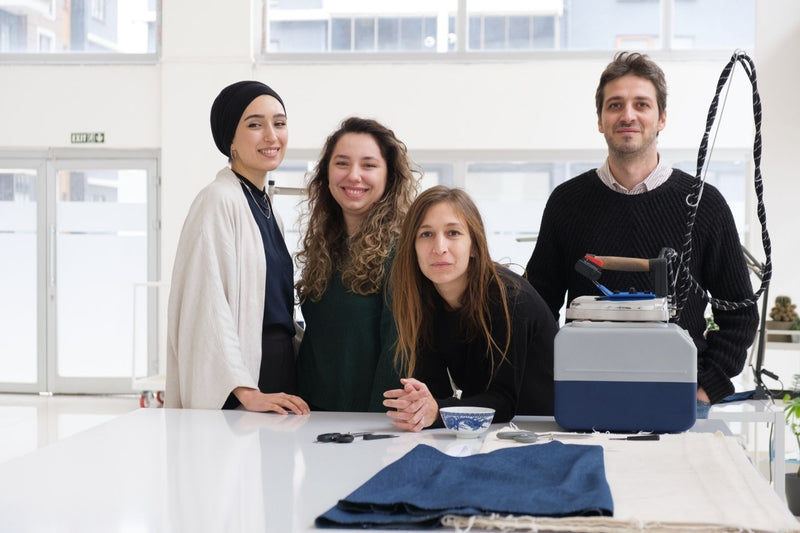
What do you consider when selecting your fabrics?
We’re very fortunate in this regard; so far, we’ve had the chance to collaborate with some of Turkey’s best fabric producers, and we proudly share this as a guarantee with our customers. Denim sits at the core of our collection; we use fabrics from Çalık Denim, a brand that stands out with its sustainable production technologies that have normalized sustainability in areas like cotton, which is typically problematic. Other fabrics are shaped according to the needs of each edition; for cold weather, we include wool, and for warm weather, we opt for linens. When making these fabric selections, we also make sure they are locally produced and made from natural fibers.

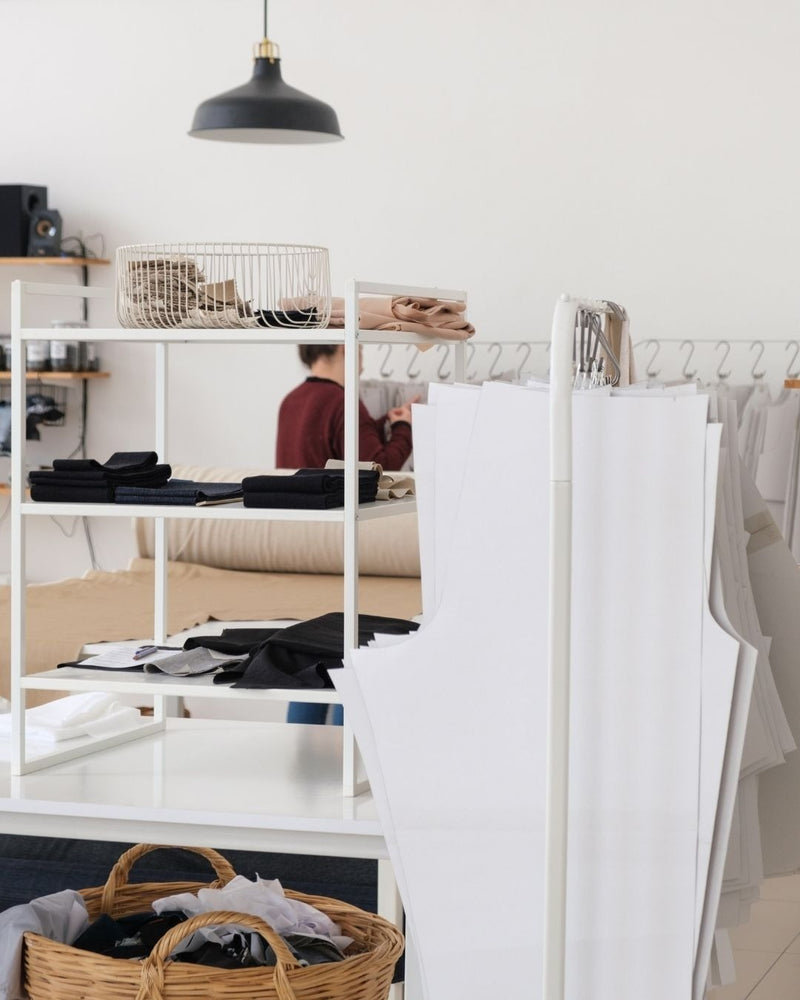

Your signature is your production method. Can you tell us more about this?
We have adopted the principle of producing only as much as needed, and we prove that a model of slow, sufficient production works against the wastefulness of the fashion industry. The process works as follows: we finalize all designs in the background, create patterns, and sew prototypes of the products that will be part of the collection for that edition, which we then photograph. Afterward, we organize the product pages, and you can place orders on our website while the edition is available for sale. We add your order to our production list the day after you place it. During the production period for each garment, the fabric is cut, sewn, and any accessories are attached, or hand finishing is done if needed. We then package the item and deliver it directly to the courier. For garments that are returned to our workshop because they are the wrong size or model, we ensure they undergo a thorough cleaning and care process. If any of the returned items meet the order requirements, they are sent on their next journey.
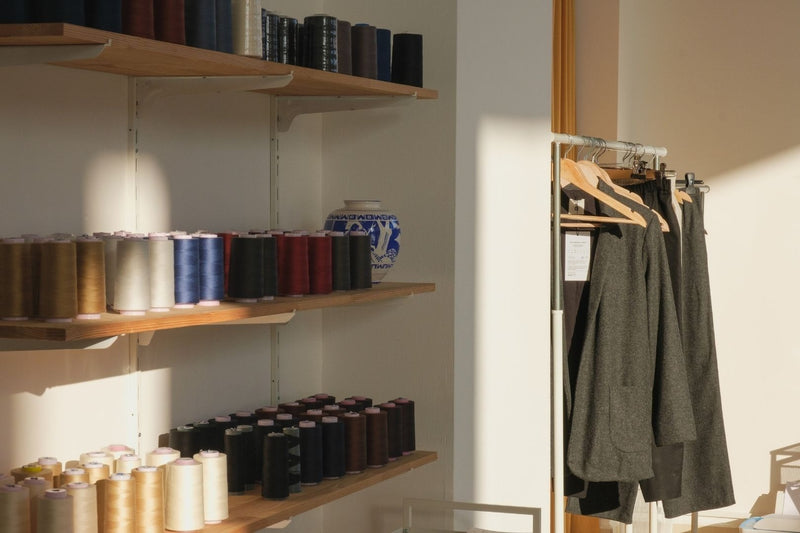
Let’s create a space here for your collaboration with vitruta. While you used to sell only through your website, people will now also be able to find your pieces in vitruta stores.
Yes, this collaboration is very valuable to us. First, we would like to thank Sinem Çelik, the founder of bluprojects, for bringing us together. Although we’ve made it a principle to avoid overproduction, we sometimes end up with garments that can no longer be produced due to fabric shortages, and they are therefore removed from the collection. We have very few of these items because we interact directly with customers during their selection process. Still, why should a good product hang idle? It should be used and complete its life cycle with minimal harm. This goal aligns with vitruta’s vision, which is why our paths have crossed. Over the years, we’ve chosen to offer models that are no longer available due to fabric depletion in vitruta’s stores, believing we share a similar perspective. Because we know that a good product today will still be great tomorrow, and garments will gain life as they are lived in with you.

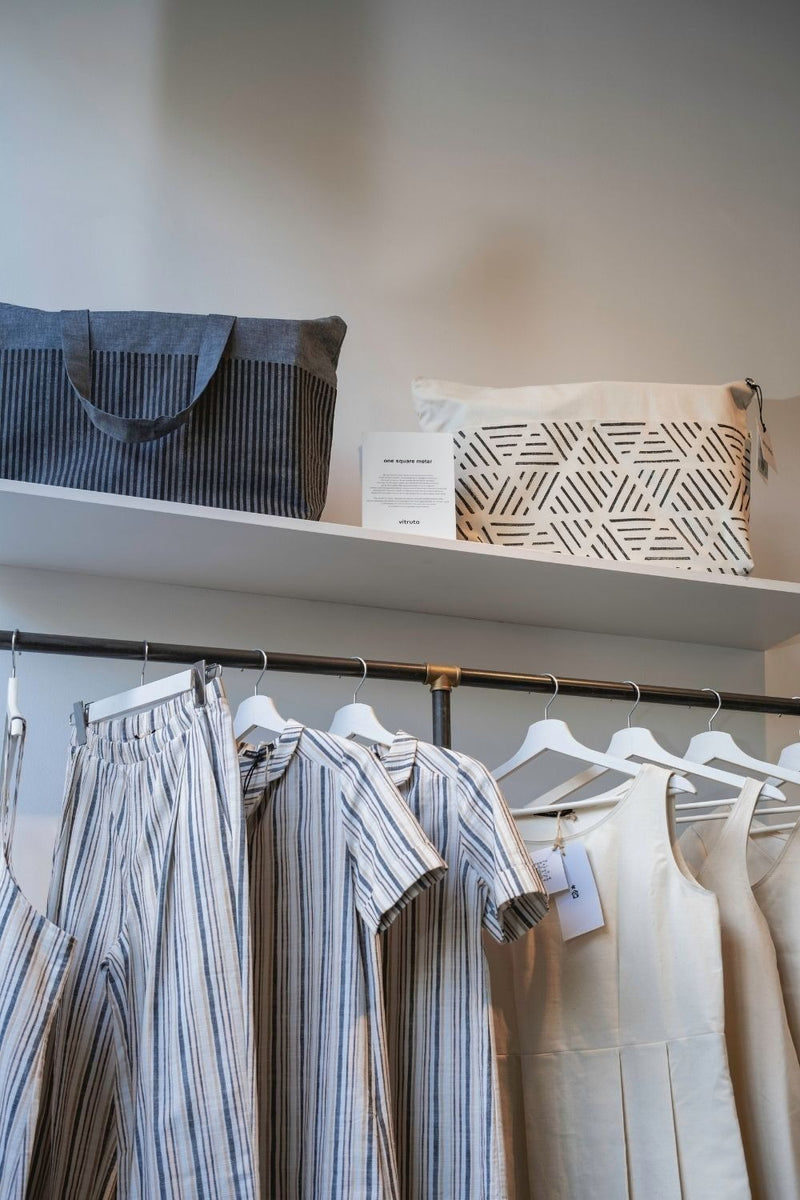
Finally, how does one square meter approach sustainability in fashion?
We wanted to create something beautiful, and we also wanted to do it the right way. The entire process organically developed with this motivation. We didn’t say, “Let’s now create a slow fashion brand”; one square meter evolved into a fashion brand that produces only to order with the principle of producing just enough, bringing well-designed garments to life with quality fabrics and excellent craftsmanship. The fashion industry is the second-largest polluter. From GMO cotton produced to meet capacity demands to polyester made from petroleum-based raw materials, chemical dyes that pollute water sources, and unworn clothes thrown into deserts – everything is a betrayal to the air, water, and earth, a betrayal to this world in our view. And all of this is wrong, shortcut, harmful, toxic… If everything is done correctly in any industry, we wouldn’t even need to discuss these issues.
The one square meter collection is exclusively available at vitruta Karaköy!